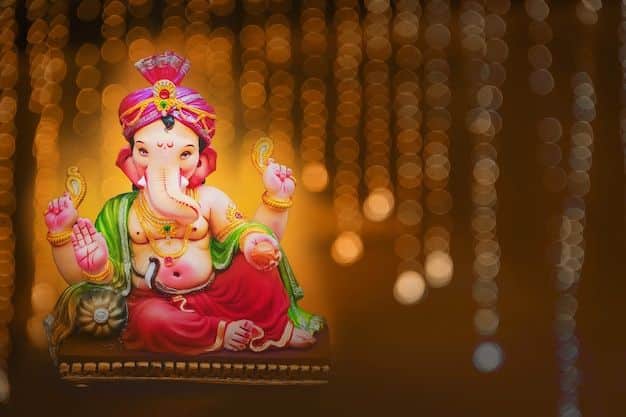
Informative
HH Shri Chamunda Swamiji’s Sacred Message on Ganesh Chaturthi
The auspicious festival of Ganesh Chaturthi marks the sacred beginning of a joyous time, celebrated with devotion and reverence from Ganesh Chaturthi to Anant Chaturdashi. It is believed that with the arrival of Lord Ganesha, immense happiness and divine blessings flow into every home. Lord Ganesha, the remover of obstacles, is welcomed with open hearts as the harbinger of Shubh (good fortune) and Labh (prosperity), along with Riddhi (wealth) and Siddhi (spiritual power).
In the month of Ashadh, when Lord Vishnu enters deep Yog Nidra (divine slumber) in the Kshirsagar (the ocean of milk), it is Lord Ganesha who is invoked to protect and bring peace to our homes during this time. As the first deity we worship, Ganesha’s presence begins the autumn festivals, leading us toward Diwali, when we also worship him alongside Goddess Lakshmi, invoking prosperity and auspiciousness.
Lokmanya Bal Gangadhar Tilak revitalized this ancient festival in Maharashtra in the 19th century with the aim of uniting society. His vision gathered the spiritual energy of Hindus and the vibrant enthusiasm of the youth, making Ganesh Chaturthi a symbol of social and cultural unity.
There are countless beautiful mythological stories associated with Lord Ganesha. One such story speaks of the day Maa Parvati, while bathing, created Ganesha from her Ubtan and infused life into the idol through Pran Pratishtha. This sacred day, falling on Shukla Chaturthi, became famous as Kalank Chaturthi, when Lord Ganesha cursed the moon.
The significance of Ganpati is vast, not just in mythology but also in astrology and spiritual practices. In astrology, the journey begins at zero degrees of Aries, much like the spiritual journey begins with the worship of Lord Ganesha. It was Ganpati, who, while transcribing the Mahabharata for Maharshi Vyasa, broke one of his tusks and used it as a pen, earning him the name Ekadanta.
For spiritual seekers, Ganesha holds a special place in the awakening of the Kundalini Shakti. The Mooladhara Chakra, the foundation of spiritual energy, is directly linked to Ganesha and is represented by the color red. In numerology, the number seven, connected to Ketu, is also associated with Ganesha, the master of hidden mysteries and lord of the origin of all things. Those guided by the number seven often find themselves drawn to his divine refuge.
During this time, as Shri Hari Vishnu rests in divine meditation, it is Ganesha, along with Maa Lakshmi, who blesses our lives with prosperity and happiness until Devuthayani Ekadashi, when Lord Vishnu awakens. This spiritual celebration is not just an act of devotion but also a reminder of our responsibility toward nature.
We must ensure that our religious beliefs do not contribute to pollution. Crafting eco-friendly Ganesha idols using materials like cardamom, toffees, dry fruits, and clay can bring both devotion and joy. After the puja, immersing such idols not only spreads a beautiful fragrance but also nourishes the earth. The dry fruits used in the idol can be shared as prasad, spreading happiness among children and the community.
By respecting nature and offering clean, sacred waters to our rivers, we not only celebrate with joy but also honor the purity of our environment. Our rivers, with their mineral-rich waters, have long been considered healing, and the tradition of bathing during festivals reminds us of the deep connection between spirituality and science.
As we immerse our beloved Ganpati, let us carry the wish that he takes away all sorrows and hardships, leaving behind blessings of happiness, prosperity, and peace. May this Ganesh Chaturthi fill every heart with divine grace and every home with joy.
Ganpati Bappa Morya!
Namaskar.
Post a Comment
-
Subscribe to Our Blog
-
Categories
-
Popular Articles
- Dead moth in the house. What universe is trying to tell you?
- Spiritual Meaning of Moth
- Vivah Bandhan Curse – What Is It and How to Spiritually Heal It.
- What are Beej Mantras?
- The Dasa Mahavidyas
- Tripura Sundari | The Dasa Mahavidya
- Maa Bhuvaneshwari | The Dasa Mahavidyas
- Ramakrishna Paramhansa – The Man who almost became a Woman
- The Five Shades of Tantra
- Maa Chinnamasta | The Dasa Mahavidyas



